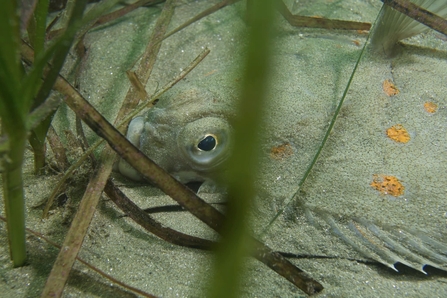A report published this April by Cornwall Wildlife Trust and Natural England has revealed that St Austell Bay supports the largest known subtidal seagrass bed in Cornwall at 359.1 hectares (887 acres) – and is one of the largest known seagrass beds in the UK. The findings come from the St Austell Bay Blue Carbon Mapping Project, part of the ambitious G7 Legacy Project for Nature Recovery announced by the Prime Minister at the G7 Summit held in Cornwall in 2021.
This news follows on from a report last summer that substantial seagrass beds had been discovered in Mount’s Bay and the Fal and Helford estuaries.
The St Austell Bay findings are the result of acoustic surveys carried out in partnership with the Cornwall Inshore Fisheries and Conservation Authority (IFCA). Boats used echosounder techniques to identify ‘blue carbon’ habitats – areas of the sea that act as highly effective carbon stores. The surveys focused on the historically under-recorded habitats of seagrass, which can flower and photosynthesise just like meadows in shallow seas, and beds of the delicate and brittle pink, coral-like algae known as maerl.
In addition to the acoustic mapping, volunteer dive surveyors from Cornwall Wildlife Trust’s Seasearch programme monitored the sites over the course of 22 dives during the project. The team found an incredible total of 122 different species of plants and animals within the seagrass and maerl beds, proving these sites to have real biodiversity importance. They even discovered the rare short snouted seahorse in St Austell Bay, and multiple economically valuable scallops.

